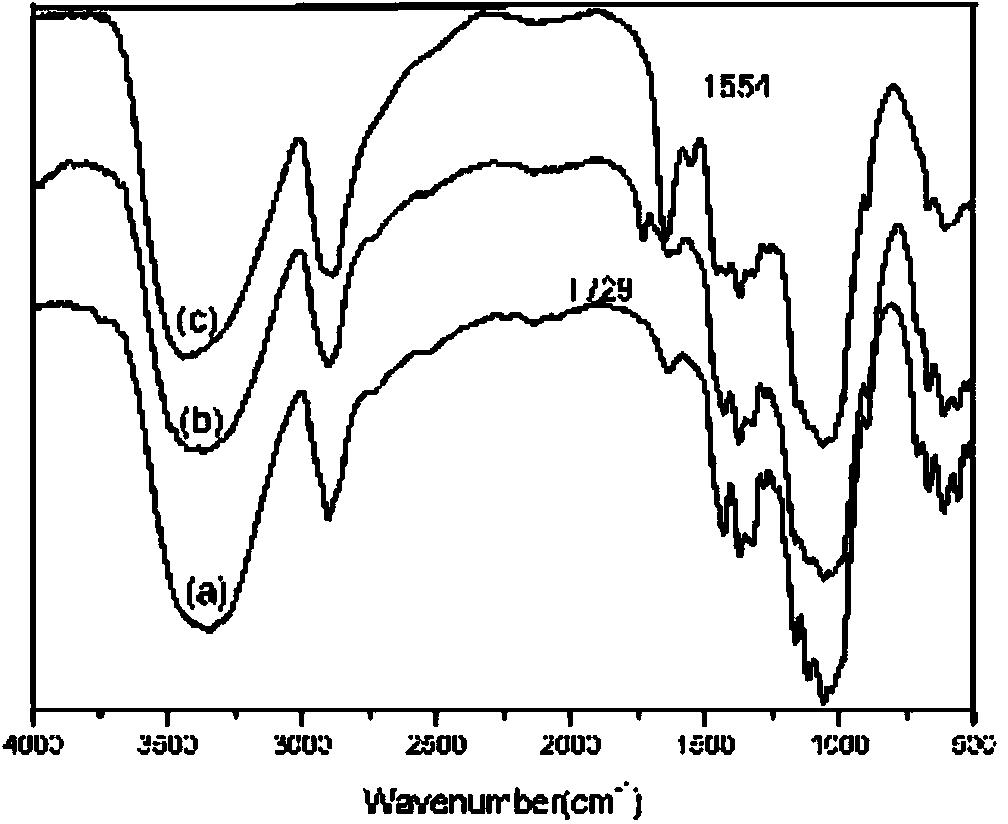Preparation method for adsorbent for treating dye wastewater
A dye wastewater and adsorbent technology, which is applied in textile industry wastewater treatment, adsorption water/sewage treatment, chemical instruments and methods, etc., can solve the problems of no adsorbent, etc., and achieve simple wastewater treatment methods, easy scale, The effect of easy solid-liquid separation
- Summary
- Abstract
- Description
- Claims
- Application Information
AI Technical Summary
Problems solved by technology
Method used
Image
Examples
Embodiment 1
[0023] Firstly, the bagasse fiber is pretreated: the bagasse fiber is dispersed and loosened for 5-10 minutes, boiled with deionized water for 2 hours, and then washed with ethanol and deionized water to remove impurities in the bagasse fiber. Then control the bath ratio to 1:30, place it in a NaOH solution with a mass concentration of 10% at room temperature and continuously stir at 100-200 rpm, activate for 60 minutes, wash until neutral, and dry for later use;
[0024] Control the bath ratio to 1:30, weigh 5g of activated bagasse fibers, place them in a sodium periodate solution with a concentration of 10g / L, react in the dark at 50°C for 120min, and wash thoroughly with deionized water to remove unreacted fibers. After the oxidizing agent is dried, the oxidized bagasse cellulose is obtained;
[0025] Control the bath ratio to 1:30, place the prepared oxidized bagasse fibers in an aqueous solution of hyperbranched polyamidoamine with a concentration of 20g / L, react at 60°C ...
Embodiment 2
[0027] Firstly, pretreat the bagasse fiber: disperse and loosen the bagasse fiber for 5-10 minutes, boil it with deionized water for 2 hours, and then wash it with ethanol and deionized water to remove impurities in the bagasse fiber. Then control the bath ratio to 1:30, place it in a NaOH solution with a mass concentration of 15% at room temperature, continuously stir at 100-200r / min, activate for 30 minutes, wash until neutral, and dry for later use;
[0028] Control the bath ratio to 1:30, weigh 5g of activated bagasse fibers, place them in a sodium periodate solution with a concentration of 15g / L, react in the dark at 50°C for 90min, wash thoroughly with deionized water to remove unreacted After the oxidizing agent is dried, the oxidized bagasse fiber is obtained;
[0029] Control the bath ratio to 1:50, place the prepared oxidized bagasse fibers in an aqueous solution of hyperbranched polyamidoamine with a concentration of 20 g / L, react at 70°C for 120 minutes, wash to re...
PUM
| Property | Measurement | Unit |
|---|---|---|
| Adsorption capacity | aaaaa | aaaaa |
| Adsorption capacity | aaaaa | aaaaa |
Abstract
Description
Claims
Application Information
 Login to View More
Login to View More - R&D
- Intellectual Property
- Life Sciences
- Materials
- Tech Scout
- Unparalleled Data Quality
- Higher Quality Content
- 60% Fewer Hallucinations
Browse by: Latest US Patents, China's latest patents, Technical Efficacy Thesaurus, Application Domain, Technology Topic, Popular Technical Reports.
© 2025 PatSnap. All rights reserved.Legal|Privacy policy|Modern Slavery Act Transparency Statement|Sitemap|About US| Contact US: help@patsnap.com


